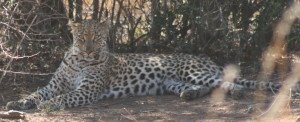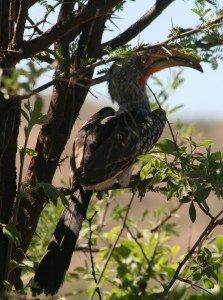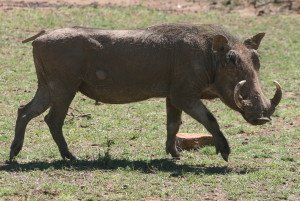Kruger National Park: Malelane 2

The south-western foothills around Malelane and Berg-en-Dal provide some of the more interesting bird-spotting drives of the Kruger National Park and a sweltering December day was no exception.
The Steilberg Loop (S120) heads north off the Matjulu Loop between the two camps and this mountainous, rugged country boasts tall woodland.
And it was between those hills, in a tall tree, that three African Hawk Eagle, one of the fiercest hunters of the park, were majestically posing.
Given that African Hawk Eagle are often seen in pairs and are believed to pair for life, the third, brownish member of the group was probably a juvenile.
The African Hawk Eagle is closely associated with the Berg-en-Dal region, but an even more interesting bird soon came along and it was a less predictable sighting than the raptor that is comfortable with both high-flying hunting from the thermals or at close quarters under cover.
Bursting from the cover of some thick woodland, a Eurasian Golden Oriole provided a flash of golden yellow and black.
This beautiful Palaearctic migrant is uncommon and always a good sighting, even if it’s normally just seen zipping between trees. On this fortunate occasion though there was time to watch the Oriole a bit as it moved through the canopy of a tree.
It can be famously hot in this area of the Lowveld so it is always a good idea to spend some time on the bridge over the Crocodile River at Malelane Gate, birds tending to congregate around the water or in the riverside vegetation.
Great White Egret, Blacksmith Plover, Egyptian Goose, Blackwinged Stilt, Sacred Ibis and Little Swift are almost always there, but today there was also a Wood Sandpiper rustling around in the shallows and a Purple Heron, often secretive, was spotted in a little backwater. Other waterbirds seen were a Water Dikkop, African Jacana, a single African Openbilled Stork, Greenbacked Heron and Hamerkop.
A Bateleur came flying over the river, followed later by a Tawny Eagle, while a Striped Cuckoo was doing its best to hide away in the canopy of a Natal Mahogany tree.
Between the tar road from Malelane Gate and the Steilberg Loop lies the S110 and the Acacia woodlands it traverses are also excellent for birding, throwing up good views of Lilacbreasted Roller, Redbilled Buffalo Weaver, Crested Barbet and Marico Sunbird.

Game seen along the S110 included African Elephant and Plains Zebra.
The eastern side of the tar road (H3) has roads like the Timfenheni Loop and the S114 taking one into mixed bushwillow and Marula woodlands and it was wonderful to see a pair of endangered animals along this stretch.
A Squarelipped Rhinoceros was passing the day serenely in the grasslands and, just a short way down the hill, a small group of Southern Ground Hornbill were walking around.
These are good game-viewing areas as well and Giraffe, Warthog and Chacma Baboon were also spotted.

Sightings list
Great White Egret
Blacksmith Plover
Egyptian Goose
Blackwinged Stilt
Sacred Ibis
Little Swift
Wood Sandpiper
Grey Heron
Reed Cormorant
Blackeyed Bulbul
Southern Black Tit
Bateleur
Impala
Waterbuck
Longtailed Shrike
Lilacbreasted Roller
African Elephant
Redbilled Buffalo Weaver
Plains Zebra
Crested Barbet
Marico Sunbird

African Hawk Eagle
Glossy Starling
European Swallow
Forktailed Drongo
Eurasian Golden Oriole
Helmeted Guineafowl
Giraffe
Squarelipped Rhinoceros
Southern Ground Hornbill
Warthog

Rattling Cisticola
Chacma Baboon
Striped Cuckoo
Tawny Eagle
Hippopotamus
Purple Heron
Water Dikkop
African Jacana
African Openbilled Stork
Greenbacked Heron
Hamerkop





